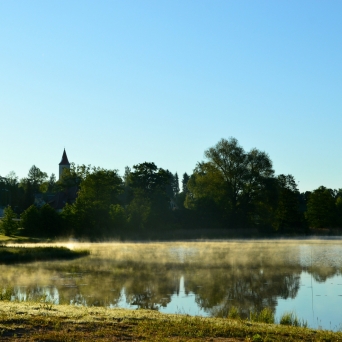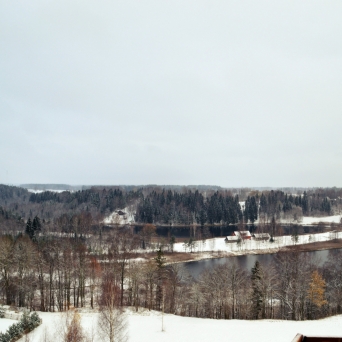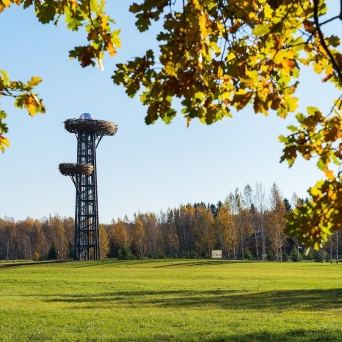The deepest lake in Estonia, Rõuge Suurjärv, is located in the deep primeval valley of Rõuge and is part of the chain of lakes in Rõuge. The deepest point of the lake, slightly southeast from the centre, reaches the depth of 38 meters. The colour (from orange to light green) and transparency of the water vary greatly. The flora consists of 22 species. Plants can be found growing at the depth of up to eight metres. A rare moss species (Fissidens Julianus), the floating pondweed, the water-lily, and the yellow water-lily have been spotted in the lake.
According to a legend, Rõuge Suurjärv once passed through a mountain on the border of Viitina where the village of Suursoo lies today. A large valley can still be seen in the mountain. An old, lovely church with silver bells is said to have sunk in Lake Suurjärv during the war and a beautiful bridge is said rise out of the church before St Michael’s Day every year, which is them crossed by a monk, who shouts: “A time will come, a time will come, when the church with its bells will rise again!”
The best-known side valley of the primeval valley of Rõuge is the 300 metres long and 12-15 metres deep valley of Ööbikuorg, which borders the ancient castle hill on the north. In spring when the bird-cherry is in bloom, the valley is filled with the sound of singing nightingales – hence the name of the valley (‘Ööbikuorg’ is Estonian for ‘Nightingale Valley’).
There is a pump with two impact valves called ‘The hydraulic ram’ operating in Ööbikuorg Valley. The pump, which is fuelled by the flow of the water, was engineered and built by Friedrich Johanson to supply his farm with water. The pump has been operating since 1939 and pumps 5 m3 of water per 24 hours into a tank, which is located at the height of 30 metres.
For more information:
- Observation tower Pesapuu https://www.visitestonia.com/en/rouge-watchtower-pesapuu
- Rõuge valley and lakes https://www.visitestonia.com/en/oobikuorg-valley-and-rouge-lakes




__QgYvtDL6.jpg)



.png)
.jpg)
.jpg)